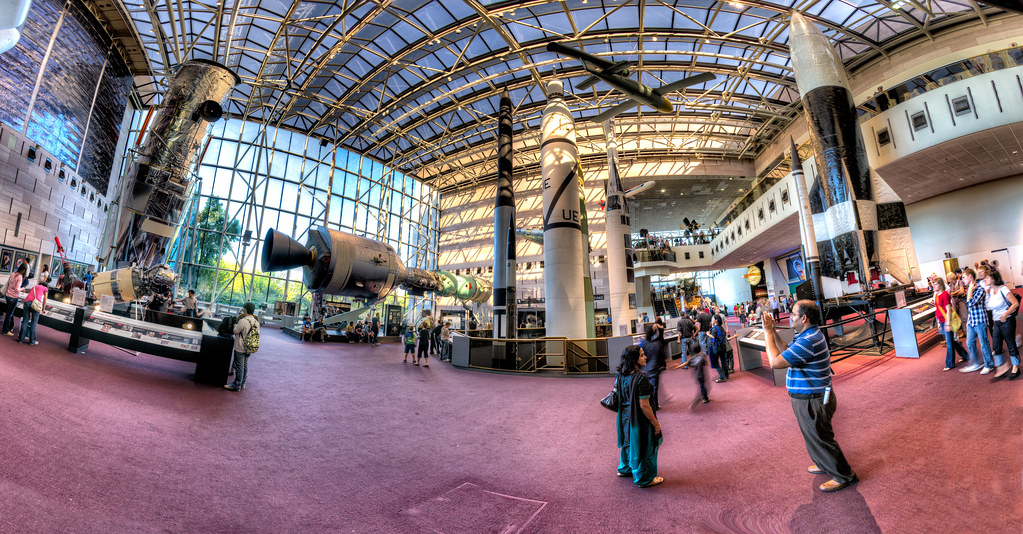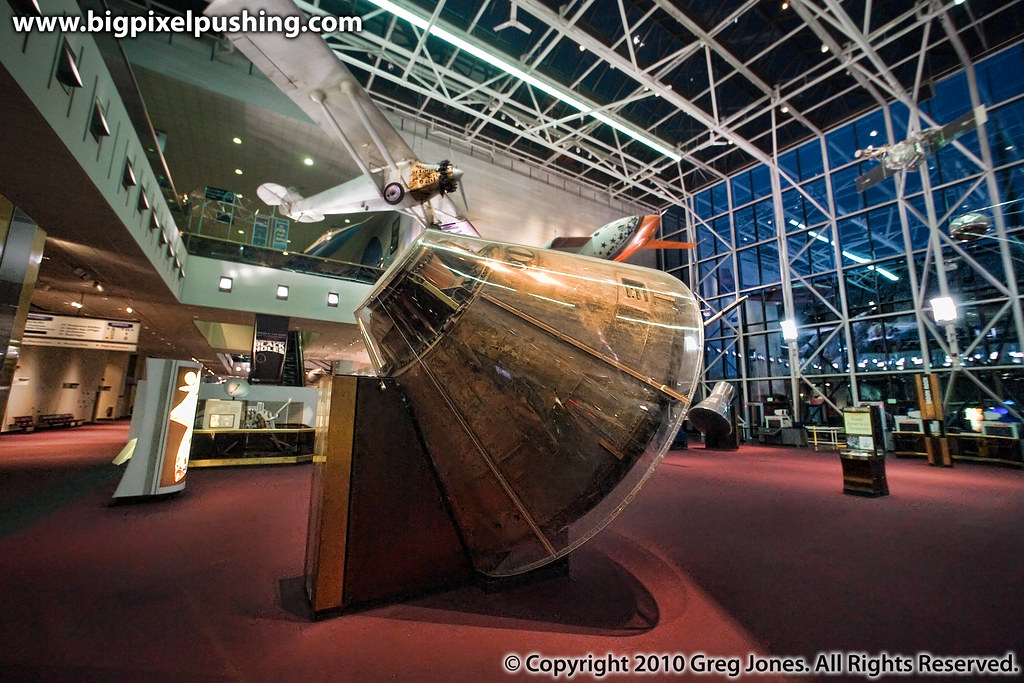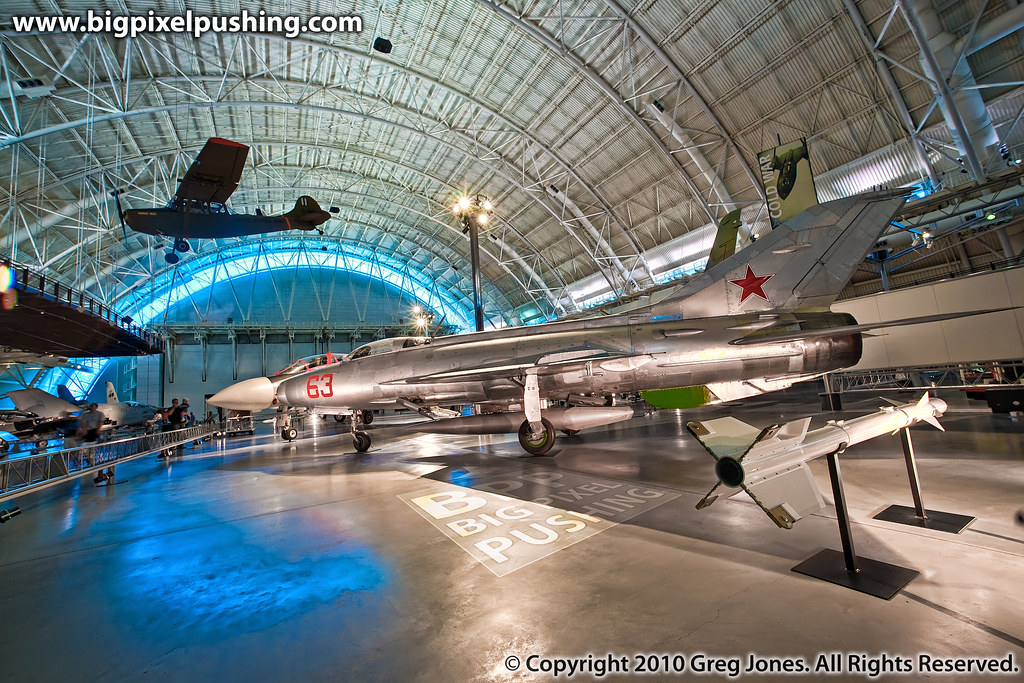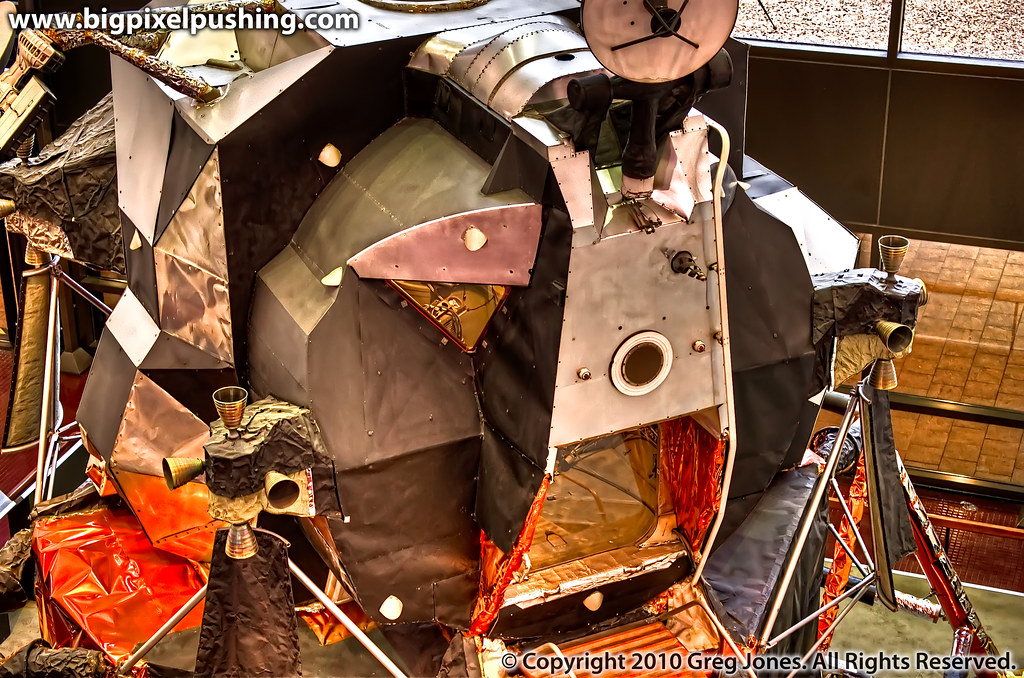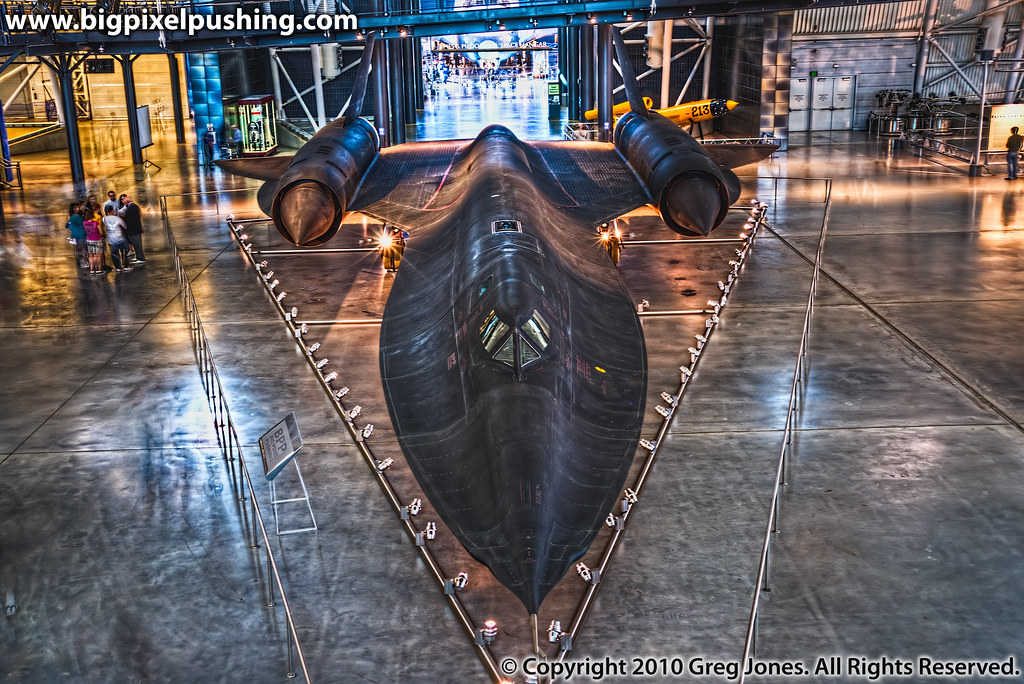America by Air
 Saturday, July 5, 2025 at 3:36PM | in
Saturday, July 5, 2025 at 3:36PM | in  Architecture,
Architecture,  Aviation,
Aviation,  HDR,
HDR,  National Air and Space Museum,
National Air and Space Museum,  Smithsonian,
Smithsonian,  Washington DC
Washington DC Below is a photograph of the recently renovated “America by Air” gallery on the first floor of the National Air and Space Museum in Washington, D.C. It had been at least two years since my last visit to Washington, and given that the Museum was undergoing a substantial and much-needed renovation, I was eager to visit if any portion of the museum was open to the public during my stay. After conducting some research, I discovered that while only certain areas of the museum were currently accessible to the public, a limited number of timed tickets would be distributed daily. Consequently, I made reservations and secured tickets for myself and Kathy.
Here is a brief overview of my personal connection to this museum. Back in 1975, approximately one year prior to the United States’ bicentennial, a news article caught my mother’s attention. It reported the construction of a dedicated national air and space museum, with Mike Collins, a former astronaut, serving as its inaugural director. Among his numerous accomplishments, Collins was the backup pilot for Gemini 7, the pilot of Gemini 10, and the command module pilot for Apollo 11, the historic first attempt to land humans on the moon.
Given my passion for space and aviation, my mother informed me about the museum. Recognizing my enthusiasm, she suggested that I send a letter to Mr. Collins. Despite my initial apprehension, as I believed that ordinary individuals did not correspond with such a prominent figure, my mother persisted, and I reluctantly agreed to write the letter.
She provided me with a general address for the Smithsonian Institution, and to my astonishment, the letter was routed to Mr. Collins or his secretary. Approximately eight weeks later, I returned home from school to discover a nine-by-eleven manila envelope addressed to me from the Smithsonian. Upon opening the envelope, I found a signed photograph of Mr. Collins in his Apollo space suit, accompanied by approximately ten pages of information regarding the museum’s plans. Additionally, there was a handwritten note expressing gratitude for my reaching out and encouraging me to visit the museum after its scheduled opening on July 4, 1976.
Despite my limited financial resources and upbringing as the child of a single, hardworking mother, I harbored a strong desire to visit the museum. However, the obstacles that stood in the way of fulfilling this desire seemed insurmountable. My mother was an ardent advocate for museums and lifelong learning, emphasizing the broadening of one’s horizons through experiential encounters. Consequently, my sister and I had had the privilege of visiting numerous museums in California at a relatively young age.
In the mid-1990s, I was employed by General Electric, where I worked with a group of engineers who shared a common passion for airplanes and aviation. They were somewhat surprised by my ability to contribute substantially to their discussions about aviation, and when I expressed my desire to visit the National Air and Space Museum, they inquired about my lack of a visit. One of them informed me about the affordability of flights to Washington, D.C., which ignited a sense of excitement within me, as it seemed that my dream of visiting the museum was finally within reach. I promptly communicated my intentions to my then-wife, and we proceeded to secure airplane tickets and hotel reservations.
Upon arriving in Washington, D.C. early in the morning, I had a single destination in mind. I boarded the subway to the Smithsonian metro station and ascended the escalator to street level, arriving at the station in the heart of the National Mall. To my right, the capital building stood tall, while to my left, the Washington Monument, with the Lincoln Memorial visible in the distance, and various Smithsonian museums lined the mall, including the National Air and Space Museum, which I could discern in the background.
Despite the museum not opening for approximately three hours, I began walking briskly towards it. As you can observe from the photograph, the museum boasts expansive glass walls, and upon my arrival, I was greeted with an awe-inspiring display of artifacts. These were the same objects I had been captivated by for years, having encountered them through books and television documentaries.
As I approached the windows of the milestones of flight gallery, I finally had the opportunity to witness with my own eyes the Wright brothers’ flyer, the first heavier-than-air powered aircraft to achieve flight in human history. I also spotted the Apollo 11 command module, which had carried men to the moon, and the X-1 “Glamorous Glennis,” the pioneering aircraft that first broke the sound barrier. The further I progressed along the museum’s glass walls, the more remarkable and captivating the exhibits became.
Enthralled by the tangible presence of these historical artifacts, I felt a profound sense of fulfillment. While this experience may seem peculiar to those who do not hold a deep appreciation for history or the significance of these milestones, my upbringing in an environment that fostered a love for learning and history made this moment truly unforgettable. My heart was filled with emotion as I remembered the words of my mother whenever a something I had long desired came to pass “There’s your dream out now.” She later informed me that she became quite emotional when I was speaking to her on the phone later that day.. As for me, I endeavored to maintain my composure. The moment was both emotionally charged and filled with joy.
Since my initial visit, I have returned to the museum numerous times. Shortly after my first visit, I fulfilled another dream and brought my mother to Washington, D.C., for approximately ten days. We visited the museum together, and she thoroughly enjoyed it, as she did everything we encountered in Washington. She passed away in 2020, and while I still miss her presence in my life, I carry on her the insatiable thirst for knowledge and strive to transmit this passion to my extended family.
On the day this photograph was captured, I experienced for the first time in years a newfound perspective on these familiar galleries. The antiquated exhibits that once explained the artifacts had been replaced by contemporary, interactive displays. Furthermore, the lighting had been significantly enhanced, making the entire space even more captivating, even for an ardent enthusiast like myself.


